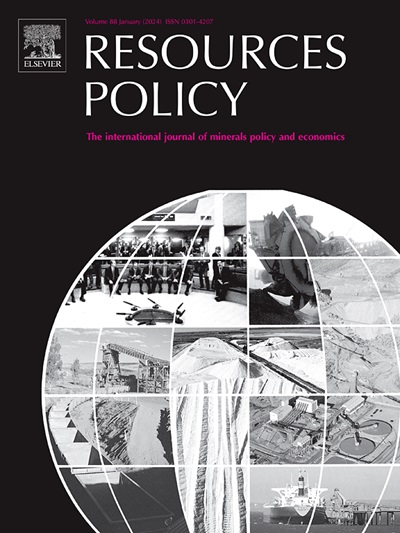美国锂生产:社会技术评价、环境影响和社会接受度
IF 10.2
2区 经济学
0 ENVIRONMENTAL STUDIES
引用次数: 0
摘要
低碳转型推动了全球锂的勘探和开发热潮。到2024年,美国只有一个锂矿和商业精炼厂,以及一个锂副产品生产商。项目从勘探到生产分为四种生产类型:硬岩开采的锂伟晶岩、软岩开采的锂粘土和沉积物,以及蒸发浓缩或直接锂提取(DLE)的锂盐水溶液开采。这篇文章回顾了美国所有主要的锂项目,已知(2024年中期)总储量为71万吨,资源量为2780万吨(含锂万吨)。在此基础上,分析了黎族发展的政治生态,重点关注相互关联的环境影响和社会感知。伟晶岩锂矿床(占储量的12%);露天采矿的提议引起了人们对水质和景观破坏的担忧。黎氏粘土和沉积物占储量的71%;关于部落文化资源和对沙漠playa生态系统的潜在影响的争论已经发展起来。盐类卤水(占储量的10%;占资源的1%)通过蒸发浓缩供应唯一的锂矿。这种方法的高用水量导致了DLE方法的研究和开发,该方法可以从地热盐水和油田盐水中回收锂(分别占资源的11%和6%)。锂景观的概要概念图,突出了负责任的美国锂生产所需的相互关联的全球,国内和特定地点因素。这项工作阐明了资源可用性、技术和社会动态如何汇聚在一起,形成锂开发和美国供应安全的结果。本文章由计算机程序翻译,如有差异,请以英文原文为准。

Lithium production in the United States: Socio-technical review of sites, environmental impacts, and social acceptance
The low-carbon transition has motivated a global exploration and development surge for lithium (Li). The United States has only one Li mine and commercial refinery, and one Li-byproduct producer in 2024. Projects from exploration to production are classified in four production types: hard-rock mining of Li pegmatites, soft-rock mining of Li clays and sediments, and solution mining of Li brines through evaporative concentration or direct lithium extraction (DLE). This contribution reviews all major U.S. lithium projects to total known (mid 2024) reserves of 0.71 Mt and resources of 27.8 Mt (million metric tonnes contained lithium). Upon this foundation, the political ecology of Li development is analyzed, focused on interconnected environmental impacts and social perceptions. Lithium pegmatite deposits (12 % of reserves; 2 % of resources) have seen open pit mining proposals raise concerns over water quality and landscape disruption. From Li clays and sediments (71 % of reserves; 74 % of resources) controversies have developed over Tribal cultural resources and potential impacts on desert playa ecosystems. Salar-type brines (10 % of reserves; 1 % of resources) supply the sole Li mine through evaporative concentration. High water usage in this method has led to research and development of DLE methods that may enable lithium recovery from geothermal brines and oilfield brines (11 % and 6 % of resources respectively). A summary conceptual diagram of the lithium landscape, highlights interconnected global, domestic, and site-specific factors necessary for responsible U.S. lithium production. This work illuminates how resource availability, technology, and social dynamics converge to shape the outcomes of lithium development and U.S. supply security.
求助全文
通过发布文献求助,成功后即可免费获取论文全文。
去求助
来源期刊

Resources Policy
ENVIRONMENTAL STUDIES-
CiteScore
13.40
自引率
23.50%
发文量
602
审稿时长
69 days
期刊介绍:
Resources Policy is an international journal focused on the economics and policy aspects of mineral and fossil fuel extraction, production, and utilization. It targets individuals in academia, government, and industry. The journal seeks original research submissions analyzing public policy, economics, social science, geography, and finance in the fields of mining, non-fuel minerals, energy minerals, fossil fuels, and metals. Mineral economics topics covered include mineral market analysis, price analysis, project evaluation, mining and sustainable development, mineral resource rents, resource curse, mineral wealth and corruption, mineral taxation and regulation, strategic minerals and their supply, and the impact of mineral development on local communities and indigenous populations. The journal specifically excludes papers with agriculture, forestry, or fisheries as their primary focus.
 求助内容:
求助内容: 应助结果提醒方式:
应助结果提醒方式:


